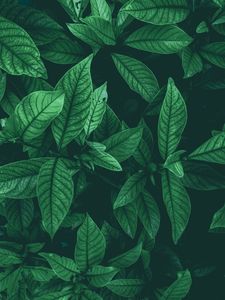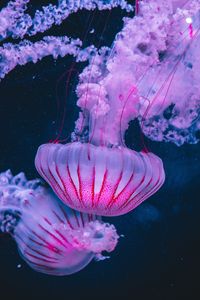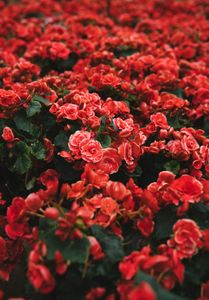



Image Color Picker
Seamlessly extract color palettes from images to elevate your designs and branding with our free image color picker
How to find the color code of an image?
Effortlessly extract and apply the exact color codes from your images with our intuitive image color picker tool. Here’s how you can pick colors from a photo in three easy steps:
Upload an image
Upload your photo by dragging and dropping it into the file area or selecting from our extensive stock library.
Pick colors from the image
Click on any part of the image using the magnifying tool to identify and select the color you wish to use.
Export color codes
Export the color codes in various formats (HEX, RGB, RGBA, HSL & HSB) for your design work.
Free Image Color Picker Tool
What is an Image Color Picker?
An image color picker is an online tool for identifying and extracting colors from digital images. When users upload a photo, it analyzes the pixels and provides color information, usually in HEX, RGB, or HTML color code formats. These color codes can be used in various applications, such as web design and digital art.
The user interface typically involves an option to upload the image. Once the image has been uploaded, the user can hover over different image sections; a magnifier may aid in selecting a precise pixel. The image color picker instantly displays its associated color code upon selecting a particular pixel or area.
The primary functionalities may include:
Color Code Display: Showing the color code of the selected pixel.
Magnification Tool: A hovering tool for precise pixel selection.
Palette Generation: Creation of a color combination based on the image.
Online image color pickers serve various purposes:
Web designers optimize the aesthetic harmony of web elements by matching color schemes directly from images.
Graphic artists need a consistent color palette for their digital artwork.
Programmers integrate exact color values into the code for HTML or CSS styling.
Color Fundamentals
When discussing color in the context of imagery and design, one must understand the foundational elements. These include primary, secondary, and tertiary colors that form the basis of color theory and are vital for image color-picking tools.
Primary Colors
Primary colors include red, green, and blue when referring to digital screens and light (RGB). In the context of painting and traditional art, they are red, yellow, and blue (RYB). These colors cannot be created by mixing other colors but can be combined to produce a wide range of hues.
Red: Often associated with passion and energy.
Green: Represents growth and nature.
Blue: Symbolizes calmness and stability.
Secondary Colors
Secondary colors are the result of combining two primary colors. The RGB color model results in cyan, magenta, and yellow as the secondary colors, which are essential for color printers (CMY), while the RYB model mixes to create orange, green, and purple.
Cyan: Made by mixing green and blue.
Magenta: Results from mixing blue and red.
Yellow: The combination of red and green.
Orange: Created by blending red and yellow (RYB).
Green: Produced by mixing yellow and blue (RYB).
Purple: The result of red and blue (RYB).
Tertiary Colors
Tertiary colors are created from the mixture of a primary color with a secondary color adjacent to it on the color wheel. These mixtures become less straightforward on a digital screen but can be seen in complex design and photo editing software where precise color adjustments are possible.
Yellow-Orange: Between yellow and orange (RYB)
Red-Orange: Between red and orange (RYB)
Red-Purple: Between red and purple (RYB)
Blue-Purple: Between blue and purple (RYB)
Blue-Green: Between blue and green (RYB)
Yellow-Green: Between yellow and green (RYB
Achieving the correct shade within an image requires an understanding of these color relationships, which image color picker tools utilize to help users identify and replicate colors accurately.
Understanding Color Models
When selecting colors using an image color picker, it's essential to understand the different color models that define color in distinct ways. Each model has its own method for representing the color spectrum, and they are commonly used across various industries and applications.
RGB and Hex
RGB stands for Red, Green, and Blue. It's a color model in which colors are created by combining these three primary colors. The RGB value of a color is expressed through three numbers ranging from 0 to 255, representing the intensity of each primary color.
On the other hand, hex codes are six-digit hexadecimal numbers used to specify colors in digital design. The first two digits represent the red channel, the middle two represent the green channel, and the last two represent the blue channel.
RGB Example: rgb(255, 0, 0) - This represents the color red.
Hex Code Example: #FF0000 - This also represents the color red.
An image color picker often allows users to select colors using a magnifying tool representing the RGB values or directly inputting the hex code.
HSL and HSV
HSL (Hue, Saturation, Lightness) and HSV (Hue, Saturation, Value) are two color models that offer different approaches to representing colors. Hue refers to the type or shade of color; saturation indicates the intensity or purity of the color, and lightness or value dictates the brightness of the color.
HSL Example: hsl(0, 100%, 50%) - A full red with full saturation at mid-lightness.
HSV Example: hsv(0, 100%, 100%) - A full red with full saturation and full brightness.
Color pickers use HSL or HSV models because they allow users to choose colors more intuitively by visually adjusting these parameters.
CMYK
The CMYK color model is primarily used in printing and stands for Cyan, Magenta, Yellow, and Key (black). Unlike RGB and Hex, which are additive color models (colors are created by adding light), CMYK is subtractive, meaning colors are created by subtracting light through ink layering.
CMYK Example: cmyk(0%, 100%, 100%, 0%) - This combination produces red.
A color picker rarely uses the CMYK model directly because it's more relevant to printing than digital design. However, understanding its principles is crucial for translating digital designs into printed materials.
Frequently Asked Questions
Upload the picture using the button above to pick colors from an image. You can also use free stock photos to get started. The tool will then display a palette based on the colors present in the picture. You can click on specific areas of the image using the magnifying tool to select colors and obtain their color codes, such as HEX, RGB, or CMYK, for use in your projects.
An image color picker analyzes the pixels of an uploaded image and identifies its colors. It calculates the dominant and secondary colors present and provides their exact color codes.
Pixelied is one of the best image color picker tools online. It allows users to pick colors from a photo and use them in various design projects.
Yes, Pixelied’s color picker tool is compatible with devices and browsers, including desktops, laptops, tablets, and smartphones.
No, we do not store any of the uploaded images. Pixelied prioritizes user privacy and security, ensuring that all images uploaded for color extraction are not saved or stored on our servers.
You can obtain colors in several formats, including HEX, RGB, RGBA (Red, Green, Blue, and Alpha channel for opacity), HSL (Hue, Saturation, Lightness), and HSB (Hue, Saturation, Brightness).
Yes, Pixelied's image color selector is free to use. It allows users to select and extract colors from images, providing a valuable tool for designers and artists for their projects.
Yes, you can save and edit the colors for later use. Simply click on the heart icon to save the color palette on the collections page.
Yes, you can export the color palettes extracted from images in various formats, including PDF, SVG, CSS, and PNG.